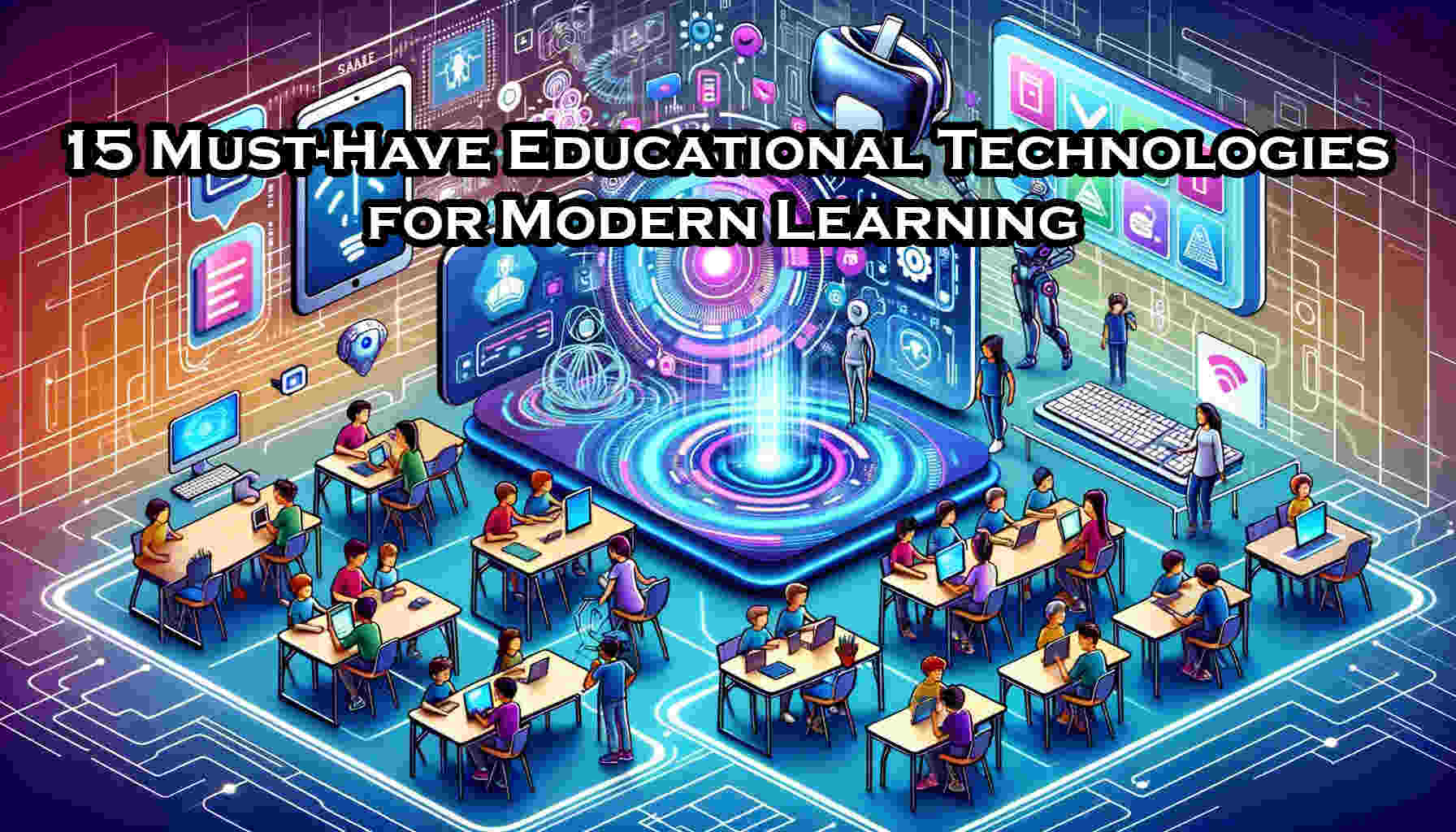The teaching and learning processes have been revolutionized in a great way by technology. Classrooms are now not only more interactive but also far more personalized and flexible as compared to before. With the help of such innovations as AI tutors and immersive VR environments, it becomes possible to study in new ways that just a few years ago were impossible. Here are also 15 remarkable education technologies that are transforming learning.
1. 🤖 Learning Management Systems (LMS)
LMS such as, Moodle, Canvas and blackboard are the back bone of digital learning. They make everything simpler starting from sharing course material to tracking student progress. Teachers can publish assignments, conduct quizzes, provide reports all in one place, whereas students can access lessons anytime anywhere.
2. 🤖 Interactive Whiteboards and Smartboards
Smartboards, as well as other interactive displays are replacing chalkboards. Such tools allow easy demonstration of videos, diagrams, or interactive quizzes by a teacher. Students remain interested and visual learners have the advantage of a more structured, dynamic information presentation.
3. 🤖 Virtual and Augmented Reality(VR/AR)
VR and AR technologies are a way of bringing life to learning. Students may explore ancient ruins, dissect a digital heart, or do a virtual chemistry experiment. With tools such as the Google Expeditions and Merge Cube, stronger understanding is provided through immersion in these activities.
4. 🤖 the artificial intelligence (AI) and chatbots.
AI is making learning more personalised and adaptive. Squirrel AI and Carnegie Learning like platforms customize lessons according to the needs of every student. AI-powered chatbots also work as 24/7 tutors who are up for answering questions and providing feedback on the spot.
5. 🤖 Remote Collaboration Tools
Google Workspace, Microsoft Teams, and Slack are some conventional apps that are necessary for modern teamwork. Students may be in the same classroom or halfway around the world and can brainstorm and co-edit documents and keep the communication smooth.
6. 🤖 Gamified Learning Platforms
Learning feels more like play with the platforms such as Kahoot!, Quizizz or Duolingo. Such platforms engage students using challenges, and leaderboards, as well as offering instant rewards, thereby increasing retention. It’s teaching that students really look forward to.
7. 🤖 Adaptive Learning Systems
Adaptive learning software such as DreamBox, Knewton and Smart Sparrow change the attributes of the content according to what a student is doing. This individualistic approach helps that students are challenging but also supported to the right standard.
8. 🤖 Cloud Storage and File Sharing
Cloud applications such as Google Drive, OneDrive and Dropbox allow easy access and sharing of school work. Students can work on documents in real time, and teachers can share resources without ever having to print a single sheet of paper.
9. 🤖 Digital Textbooks and eBooks
Soft copy books from platforms, such as Kindle, Apple Books, and OpenStax, provide a more intelligent option to use jumbo textbooks. Later on students get the opportunities such as video links, embedded glossaries and powerful search tools included in these eBooks which enable students to dig deeper into the content itself.
10. 🤖 STEM and Coding Tools
Learning to code and delve into STEM ideas has never been easier by platforms such as Scratch, Tynker, and Raspberry Pi. These tools teach students about problem-solving, robotics, and programming by way of fun, hands-on projects.
11. 🤖 Online Courses and MOOCs
Whether a learner needs a course on art history or data science, there is a site like Coursera, Khan Academy, or Udemy to provide thousands of courses within either of the disciplines. You can learn from the best instructors in the world sitting on your laptop or phone.
12. 🤖 Digital Assessment Tools
Applications such as socrative, edmodo, and google forms simplify easy evaluation of student performance by teachers. They inform teachers of immediate feedback, analysis of data, and insights that enable them to adjust their instruction in real time.
13. 🤖 Educational Podcasts and Audiobooks
Podcasts and audiobooks on sites, such as Audible, Spotify, and Libby lends well to auditory learners or those on the move to ingest information conveniently. It’s learning that can be done in a busy schedule.
14. 🤖 3D Printing in the Classroom
MakerBot, Ultimaker and Prusa 3D printers are shattering new practices for learning design, science and engineering. Students can create models, prototypes, or, even replicas of historical items–converting ideas to physical, real world objects.
15. 🤖 IoT in Smart Classrooms
Classrooms are being brought under the automation and insight of the Internet of Things (IoT). From smart desks and sensors to AI powered assistants, these technologies make it easier to track engagement and automate attendance to produce a more efficient, reactive learning environment.
Wrapping Up
Nowadays educational technology is evolving rapidly so that learning becomes dynamic evermore. Whether it be interactive games, virtual field trips, or AI tutors, the tools are engaging students with material that really resonates. With schools innovating, the future of education appears brighter, inclusive and a lot more exciting.
